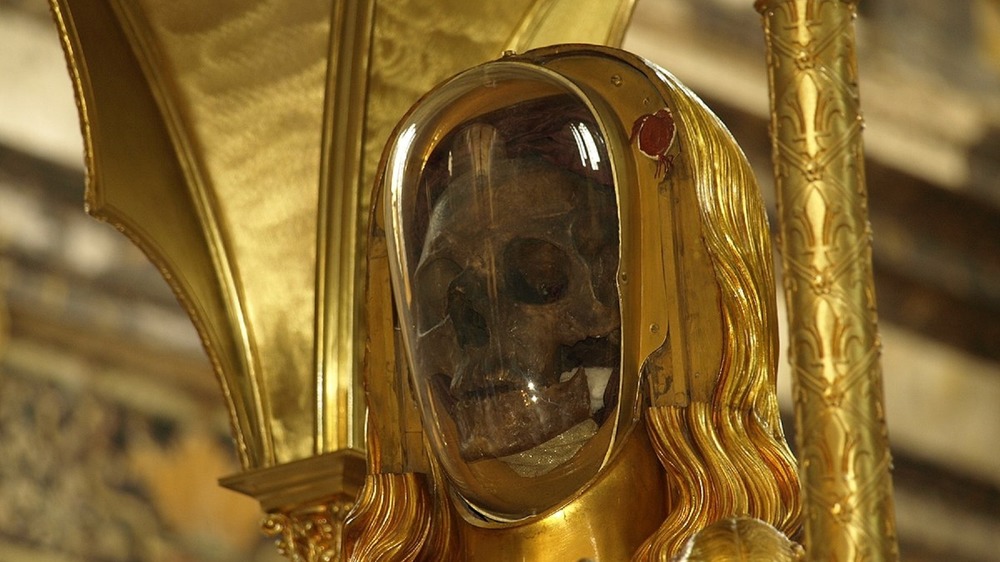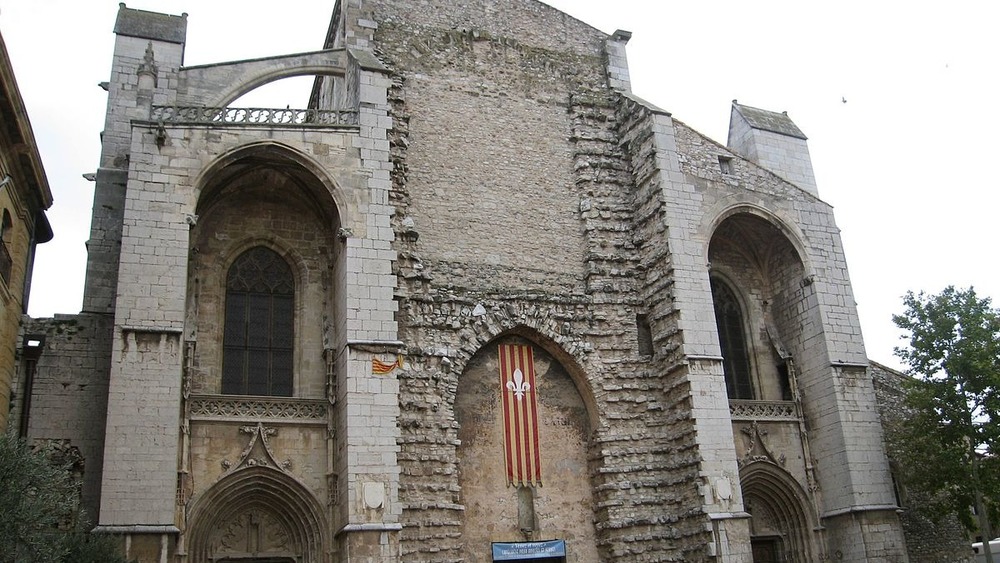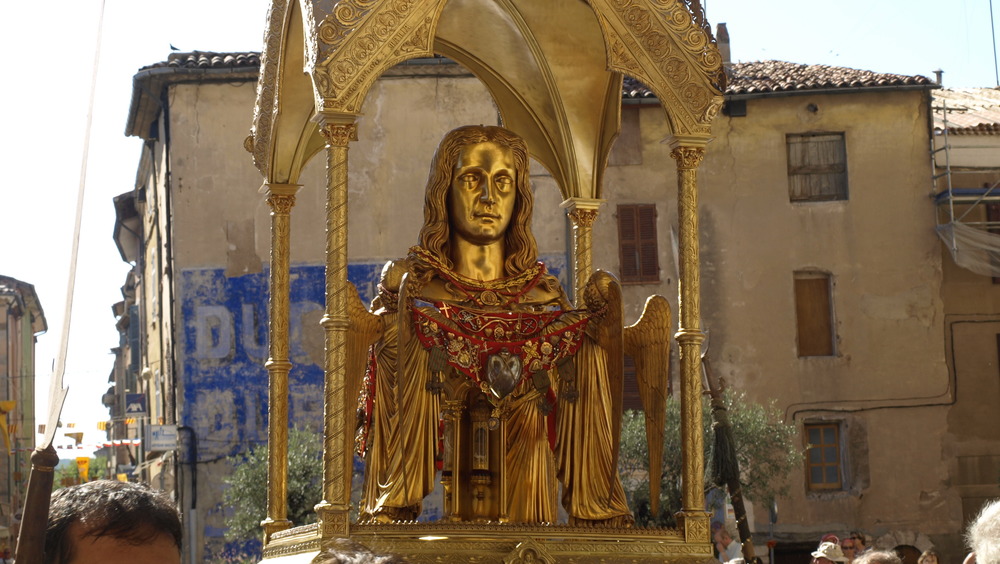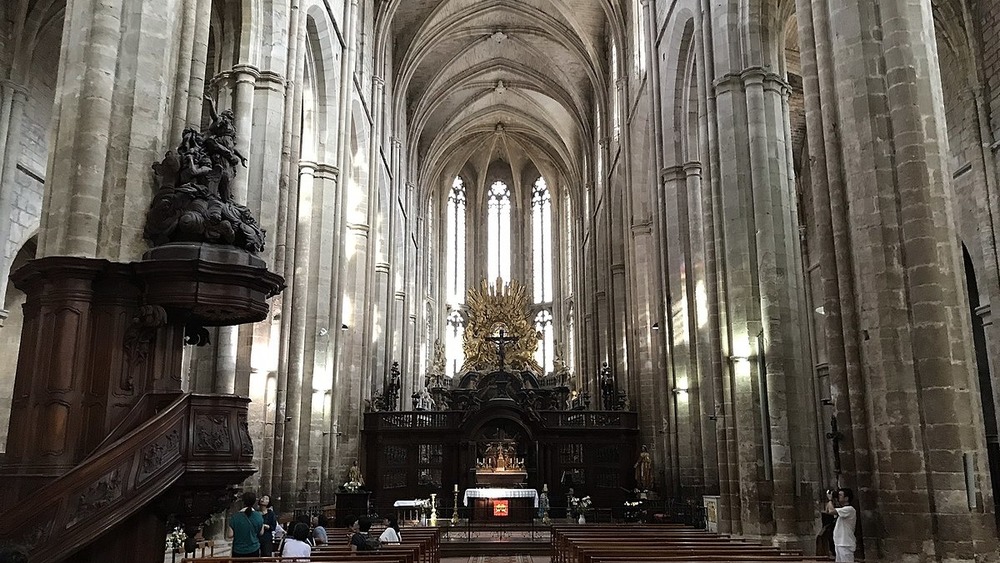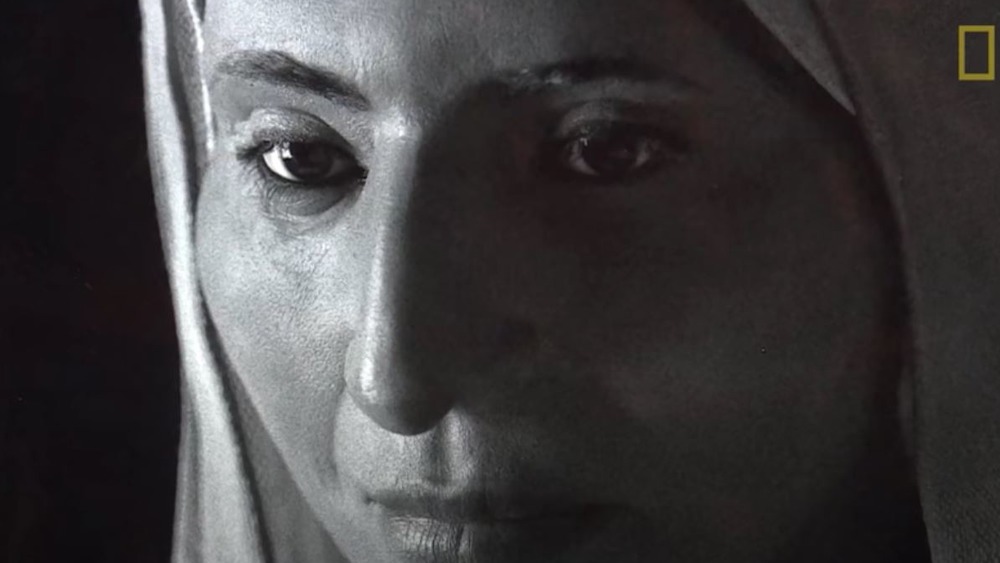The Strange Fate Of Mary Magdalene's Skull
Well before Dan Brown was analogizing Mary Magdalene's womb to the Holy Grail via Vatican conspiracies and murderous religious orders in 2003's controversial novel The Da Vinci Code (and its movie version, starring Tom Hanks) the New Testament's most well-known sex worker had come into prominence as a keystone Biblical figure. Her official, doctrinal, church-chronicled story is well-known to Christians, and perhaps even non-Christians: she had "seven devils" removed from her by Jesus, washed his feet with her hair as a symbol of piety, followed him around a bit, was there when he was crucified, was the first to see him after he came back to life, and so on.
Beyond this tale, there aren't many historically substantiated facts about Mary Magdalene. In fact, the whole "reformed sex worker" angle to her story isn't even in either the Bible or extrabiblical texts like the Apocrypha — it was, as Bible Gateway and Bible Odyssey explain, an invention of Pope Gregory I (540-604) that gained traction via the libelously named "Magdalen House" in Naples in 1324 for "fallen women" (a term attached to sex workers only in 19th century England). Renaissance painters picked up on the image, though, and boom: Mary Magdalene is still associated with a lingering, outmoded belief of sex workers representing those most morally wayward.
So how is it possible, then, if so little is known of Mary Magdalene, and so much of what's known is disinformation, that there's a church in France that claims to have her skull under glass in their basement?
Mary Magdalene's sarcophagus and remains were apparently discovered in France
So no, apparently Mary did not go on to be the matriarch for a Frankish, Merovingian bloodline of dynastic, Jesus-sired progeny (per 1982's Holy Blood, Holy Grail). But apparently, as you can see on Cult of Weird, that is her skull and skeleton housed in something that looks like a glass helmet and golden golem body with long, golden hair wreathing the head and shoulders, at Saint-Maximin-la-Sainte-Baume Basilica, northeast of Marseille.
At least, it's her according to the wax-covered wooden tablet that reads, "Hic requiescit corpus beatae Mariae Magdalenae" ("Here rests the body of Mary Magdalene"). The tablet, dated to around the 1st-4th centuries, was found in 1279 by Charles II, the Count of Provence, under a small chapel in a forest, next to a marble sarcophagus. Charles swore the sarcophagus emitted a scent of perfume when opened, like that used by Mary Magdalene when she anointed Jesus' feet in the Bible.
A nearby piece of papyrus read, "The year of the birth of the Lord 710, the sixth day of December, at night and very secretly, under the reign of the very pious Eudes, king of the Franks, during the time of the ravages of the treacherous nation of the Saracens, the body of the dear and venerable St. Mary Magdalene was, for fear of the said treacherous nation, moved from her alabaster tomb to the marble tomb, after having removed the body of Sidonius, because it was more hidden."
Her skull and bones were inserted into a golden, bust-like reliquary
So how is this all possible? How legit could this skull and skeleton be?
As it turns out, this isn't any kind of newly uncovered secret. Charles II built a large basilica over the original chapel location, dubbed it St. Maximin, and people have been going there on pilgrimages for hundreds of years. There were more bones, in fact, but French revolutionary figure Paul-François-Jean-Nicolas, vicomte de Barras, stole them in 1794. One of the teeth circulated its way around the world and has been on display at the Metropolitan Museum of Art in an extremely ornate reliquary since 1917. The rest were kept safe, as Magdalene Publishing recounts, because a sign was placed over the door to the basilica that said "Military Supplies."
The remaining bones, which originally lacked a jaw and femurs, are housed in a golden reliquary built in the shape of a bust with a clear faceplate, all held aloft by four angels. Pope Boniface VIII (1230-1303) commissioned the reliquary, and had a jawbone added. Typically, the bust is installed in a shrine on the altar of the basilica, but every year on the Sunday nearest July 22, Mary Magdalene's saint day, pallbearers carry it around a nearby town. A golden facemask is placed on the front, and there's a Feast Day Mass celebrated that includes drums, rifles, and horses, per Atlas Obscura.
Legend says she escaped to the shores of Gaul and hid in a cave
This is where historical fact, local legend, and alternative research converge. As legend goes, Mary Magdalene fled persecution in Judea – the Roman province encapsulating conquered Israel — with Lazarus, the friend of Jesus whom the Bible says Jesus brought back to life, and 72 other people, including Biblical figures Mary-Jacob, Salome, and Maximi, per Pilgrimages. Texts such as Holy Blood, Holy Grail insert the very narratively-compelling addendum at this point: "She also fled with Jesus' baby" — thus the whole holy Merovingian bloodline story that crops up in France, which The Da Vinci Code shapes into its Sophia character, current descendant of Jesus and Mary.
And so Mary Magdalene, who is said to have died in 75 CE, arrived in Gaul (legend says she did it on a boat with no sails or oars) and took refuge in a cave in the Sainte-Baume mountains, near the current basilica. This cave itself, as Découvertes states, has been built into its own sanctuary along a mountainous trail accessible via a 45-minute hike. It's looked over by the Benedictine Sisters of the Sacred Heart of Montmarte, famous for their lawn-lounging basilica in Paris, Sacré-Coeur ("Sacred Heart").
If this all tracks, then at some point after Mary passed away, her remains were moved from the cave area to their current resting place at St. Maximin Basilica, where Dominican monks have been keeping watch since 1295.
Facial reconstruction reveals the supposed face of Mary Magdelene
Thanks to some modern facial reconstruction technology, we're able to glimpse the face of the person whose skull is housed in the golden bust at St. Maximin. Although, in the words of Philippe Charlier, biological anthropologist from the University of Versailles who performed the facial reconstruction, "We are absolutely not sure that this is the true skull of Mary Magdalene."
Charlier, along with forensic artist Philippe Froesch, became interested in the relic around 2014, as National Geographic says. The bones can't be removed from their reliquary, so the duo took over 500 photographs of the skull from various angles in order to generate a composite of bone structure, skull size, and the like. They were able to determine that the remains do indeed belong to a Mediterranean-born woman who died at around 50 years old, who had dark brown hair and a skin tone that matches ethnic groups in the region. There were even remnants of clay in hair still attached to the skull consistent with clay used at the time to prevent lice. The research was done independently, without church involvement.
In the future, the two state that they would love to run DNA testing on the relics. But of course, that wouldn't unequivocally prove that they belong to Mary Magdalene (unless we found a Merovingian heir, hah). That doesn't really change the bones' significance, though; people have already chosen to believe in them, anyway.
